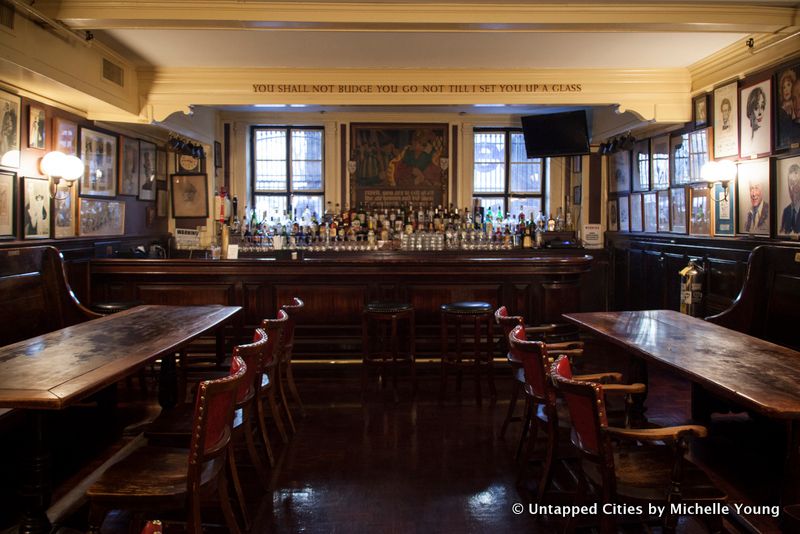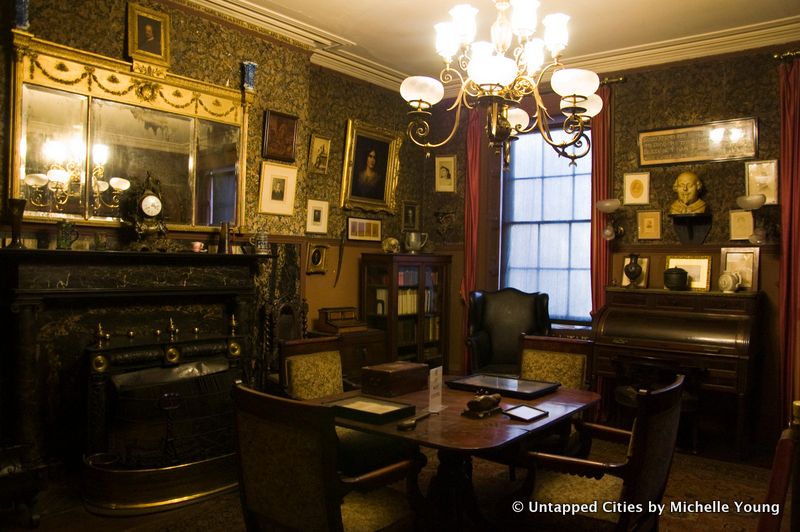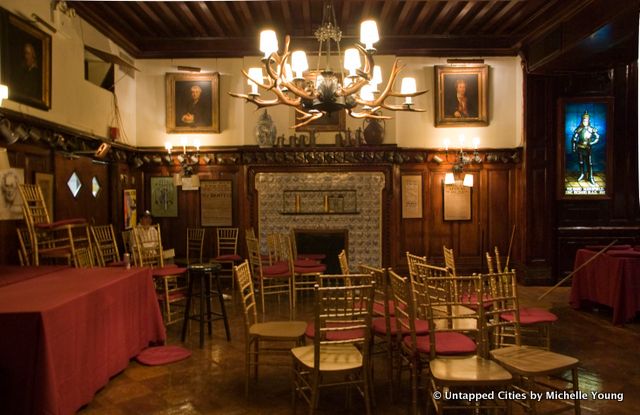Last Chance to Catch NYC's Holiday Notalgia Train
We met the voices of the NYC subway on our nostalgia ride this weekend!



In April 1865, after the scandal that rocked the nation, Edwin Booth knew he had to do something to redeem his family’s name. Though he had nothing to do with his brother John Wilkes Booth’s assassination of Abraham Lincoln, he knew that the prominent Booth family was irrevocably stained. But rather than slink away into obscurity, Edwin endeavored to do something that would contribute to the cultural life of New York City forever after.
Upon a visit to the Garrick Club in London, Edwin Booth realized that it was exactly the type of place that New York City needed: a club where actors could socialize with the elite and elevate their status from rabble-rousers to artists. In 1888, he founded The Players Club at 16 Gramercy Park South together with fifteen other incorporators, including Mark Twain and General William Tecumseh Sherman. The club celebrates its 125th anniversary this year, and it’s the oldest club in New York City that’s still in its original location.


Housed in a stately Greek Revival townhouse close to the one where Teddy Roosevelt grew up, The Players Club occupies four floors, plus the Grill and taproom in the basement. Entering into the Players Club feels like stepping back in time to the Gilded Age, when men wore smoking jackets and entertained guests like the notorious Evelyn Nesbit, the beautiful young actress whose husband killed Stanford White, one of New York’s most prominent architects of the time, who was also a member of The Players Club. You can almost imagine White lording over the place in one of those magnificent armchairs, a cigar in one hand and a Scotch in the other.

The club was male only until 1989. In the theater on the main floor, each member had his own tankard, which always hung in the same spot so he could take it down to the taproom and return it to his proper place when he was done. Every year on December 31st, the anniversary of the Players Club, the members passed around a giant trophy-shaped tankard and everyone took a swig.

Our guide, John McCormick, said “the Players Club is living history,” and everywhere you turn, you can see it all around you. Portraits of the club’s most prominent members line the staircase as well as the theater. In the second floor library, a bust of Poe stares down from the top of a bookshelf. The table in the library contains photographs of the many actresses of the day who visited but were not allowed to become members. The library is full of original manuscripts and excellent resources for theater researchers.

In the cards room, you can see the card table where Mark Twain played and old costumes worn in Shakespearian dramas by Edwin Booth and his contemporaries. Delft tiles depicting Shakespeare plays line the fireplace. The Actors Equity Association was formed here.


Edwin Booth kept a room on the third floor, which remains full of his mementos, exactly as he left it. His little slippers stand at attention by the bed (prominent actor or not, he was clearly not a tall man). Walking into the room, you can still smell the tobacco scent of smoke that clung to the wallpaper. One of his fans actually left his body to Booth after he died, and became the skull that Booth held in Hamlet’s famous soliloquy.
Edwin Booth always kept himself busy, as he was the owner of a theater, for which he organized performances, sold tickets, acted and took the company on tour. On the fourth floor, there were rooms where actors passing through could stay for a few days.

Rooms for actors on the fourth floor, currently off limits even to members
Sarah Bernhardt had her own “room” in The Players Club. On a visit to the club, she got stuck in the elevator for over an hour, and left in a huff, vowing to never come back. The club’s members joked that the elevator was Sarah Bernhardt’s room, and it’s been called that ever since.

Sarah Bernhardt’s “room” at the Players Club

The walls are covered with portraits of its members, like Jimmy Fallon who hosted his holiday party at the Players Club
Throughout its storied past, the Players Club has been considered “an oasis away from the maddening crowd.” Daniel Day Lewis recently came in to find some peace and quiet. Members have included John Barrymore, Cary Grant, Tommy Lee Jones, Gregory Peck, Kevin Spacey, George Kaufman, Angela Lansbury, Liza Minelli, Ethan Hawke, Jimmy Fallon, and many others. There are currently 600 members, and the club is eager to welcome new members.
The Club hosts a wide range of events including plays, workshops, literary readings, concerts, the annual Hall of Fame dinner, the Booth award, pipe night (without smoking), the Shaw Project (monthly readings of George Bernard Shaw’s plays), and more. The Players Foundation for Theater Education is open to the public. The Grill, where Mark Twain’s pool cue hangs above the fireplace, is always open to members and their guests, who may also borrow the club’s key to Gramercy Park, where a statue of Edwin Booth commemorates his many achievements.

Join us for a special Untapped Cities insiders tour of the Players Club, led by a club docent:
Insider Tour of the Players Club on Gramercy Park
Next, check out 10 of NYC’s oldest private clubs or take a look at another private club just next door, The National Arts Club.
Subscribe to our newsletter